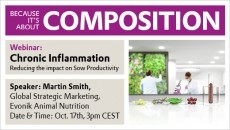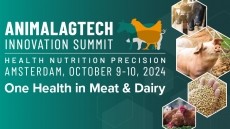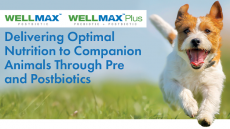Is management of microbial ecosystems the key to better broiler performance?

So says Lallemand Animal Nutrition as it publishes abstracts about some of its latest scientific findings related to yeast and broiler production. Presentations on the e-posters will be delivered at the World Poultry Congress (WPC) in August 2022 in Paris.
A study was conducted by two research teams at the University of Thessaloniki and the University of Ioannina to evaluate the effects of the combination of Lallemand’s multi-strain yeast fraction product (YANG) and the coccidiostat, salinomycin, on the performance and health of broiler chickens orally challenged with coccidian oocysts.
When compared to controls, the combined supplementation was the only treatment that showed significantly improved bodyweight of the broilers at days 21 and 26 of age along with a lower feed conversion rate (FCR), said the authors.
The combined treatment, as compared to the coccidiostat alone, showed a lower lesion score at day 21 and significantly lower coccidia contamination of the different gut compartments: duodenum, ileum, and ceca, they continued.
“We conducted two previous trials in a coccidiosis environment with YANG, but this is the only trial using YANG in combination with a coccidiostat,” a spokesperson for Lallemand Animal Nutrition said
The results will be used as a tool or model to confirm the immunomodulatory effects of that product, added the representative.
Probiotic paper
Lallemand also flagged a metanalysis of trials of its live yeast probiotic.
To date, it said, the use of the live yeast, Saccharomyces cerevisiae boulardii CNCM I-1079 (LEVUCELL SB), to improve the performance of broiler chickens has been documented in controlled research trials, as well as in field evaluations.
Results from 24 controlled studies - 12 research facilities, 12 commercial farms settings - were compiled, said the firm. Among those, six trials presented challenges with microorganisms commonly encountered in poultry production.
Overall, the statistical analysis revealed consistently improved growth performance and survival rate (3.5% mortality with the probiotic vs. 4.3% for control groups, on average) with the live yeast supplement, said Lallemand.
The benefits were even more pronounced under challenging conditions, it reported.

Litter management
Stressing how nutrition, health, and a clean animal environment need to be considered jointly to guarantee the quality of animal production, Lallemand also shared the results of a study on its microbial litter conditioner that showed it may contribute to enhanced poultry performance and welfare through improved litter quality.
“Litter management is important in broiler production. That’s because it directly affects animal well-being, especially foot health, and air quality, notably building ammonia levels.“

The study evaluated the effects of the product on the physicochemical characteristics of the litter, as well as the performances of broilers. The authors noted that as the litter quality improved through the use of the conditioner relative to humidity, temperature, and overall litter score, so did the bird performance.
The team observed that foot health was also enhanced, fewer birds exhibited signs of footpad dermatitis (FPD), and for birds with FPD, the damage was less severe in the inoculated pens.
Julia Plateau-Gonthier, product manager, animal environment, Lallemand Animal Nutrition, told us:
“This is a pretty new area for us, a complementary approach to animal nutrition.
“The bacterial litter conditioner includes bacteria and enzymes as the main active components. Both cellulolytic enzymes and bacteria (Bacillus spp. and lactic acid bacteria) will orientate towards positive colonization and fermentations within the litter.
“Together with the action of the carrier, it will help to maintain a drier litter, less degraded and emitting less ammonia, together with a better-balanced microflora.
“Finally, the benefits go beyond animal building: improving litter fermentation will improve the quality of the organic waste, resulting in better composition – retained nitrogen - and a compost-like consistency when used as farm fertilizer.”


















